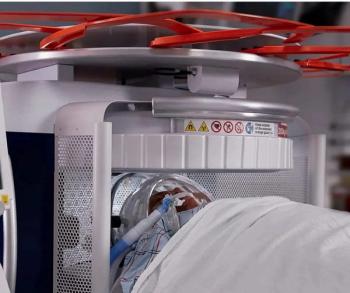New research suggests that 18F-PSMA-1007 PET/CT can have a significant impact in the staging of patients with newly diagnosed high-risk prostate cancer (PCa).
For the prospective study, recently published in the Journal of Nuclear Medicine, researchers compared the use of 18F-PSMA-1007 PET/CT to initial staging with 18F-NaF PET/CT in 160 patients with high-risk PCa. There was a 10-day mean interval between 18F-NaF PET/CT and 18F-PSMA PET/CT, according to the study.
The study authors found that 18F-PSMA-1007 PET/CT led to upstaging of 38 patients to a more advanced metastatic staging and less advanced staging for two patients. Specifically, 18F-PSMA-1007 PET/CT revealed regional lymph node metastases in 13 patients and distant lymph node metastases in 8 patients that were undetected by 18F-NaF PET/CT.
Overall, researchers noted that 18F-PSMA-1007 PET/CT led to a 15 percent increase in the detection of metastatic involvement in contrast to initial staging with 18F-NaF PET/CT.
“We found that PC stage changed for 25% of patients with 24% categorized as more advanced disease, mostly because of increased detection of lymph node metastases. In approximately 1 of 5 patients, 18F-PSMA PET/CT detected lymph node metastases that were not identified on CT,” wrote lead study author Claus Madsen, M.D., who is affiliated with the Department of Nuclear Medicine at the Copenhagen University Hospital in Herlev, Denmark, and colleagues.
Three Key Takeaways
- Enhanced metastatic detection. 18F-PSMA-1007 PET/CT increased metastatic detection by 15 percent compared to 18F-NaF PET/CT, revealing additional regional and distant lymph node metastases in patients with high-risk prostate cancer.
- Significant impact on staging. Use of 18F-PSMA-1007 PET/CT led to stage changes in 25 percent of patients, most often upstaging due to previously undetected lymph node involvement.
- Treatment modification implications. Findings from 18F-PSMA-1007 PET/CT prompted changes in treatment plans for 21 patients, particularly increasing the number of patients receiving therapy for metastatic hormone-sensitive prostate cancer.
The findings with 18F-PSMA PET/CT led to treatment plan changes for 21 patients in the cohort, including 19 patients with more advanced PCa presentations.
“The most notable impact on treatment plans was associated with the increased detection of lymph node involvement on 18F-PSMA PET/CT. Consequently, the largest increase was observed in the group planned for mHSPC-LV (low-volume metastatic hormone-sensitive PCa) treatment, which rose from 25 patients (16%) to 37 patients (23%),” pointed out Madsen and colleagues.
(Editor’s note: For related content, see “Current Perspectives on Prostate Cancer and Emerging Theranostic Agents, Part 1,” “Meta-Analysis Shows Benefits of PSMA PET in Detecting Recurrence and Metastasis with PCa” and “Study Emphasizes PSA and PSMA PET Tumor Volume Assessment for Predicting mHSPC Progression After Apalutamide and ADT.”)
Beyond the inherent limitations of a single-center study, the authors acknowledged that the multidisciplinary team’s knowledge of 18F-NaF PET/CT findings and subsequent treatment decisions may have affected treatment decisions based on the findings with 18F-PSMA PET/CT.





























